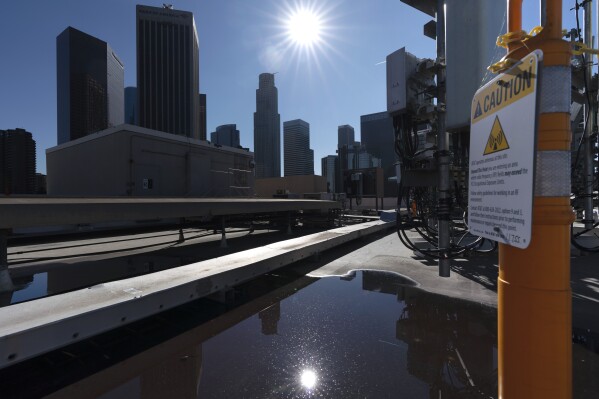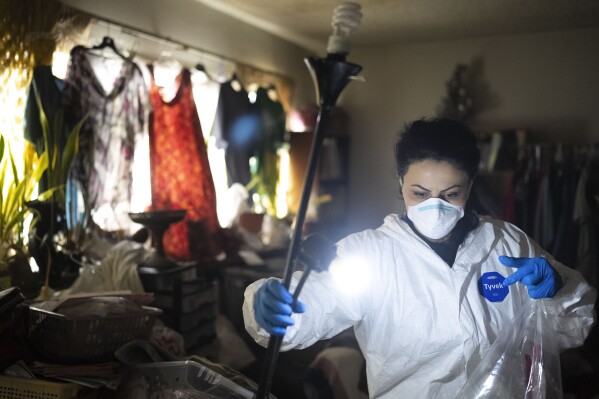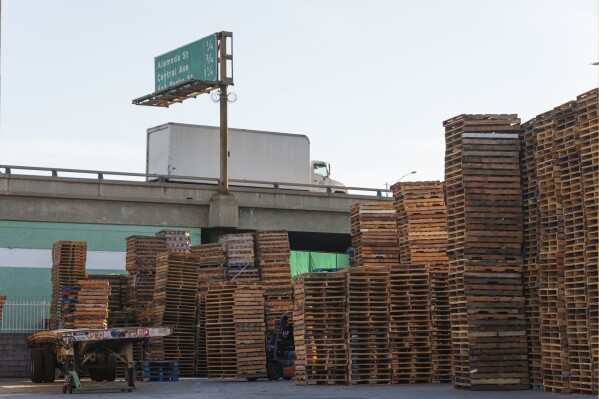WWII-era munitions found under water in survey of Southern California industrial waste dump site
LOS ANGELES (AP) — Underwater dump sites off the Los Angeles coast contain World War II-era munitions including anti-submarine weapons and smoke devices, marine researchers announced Friday.
A survey of the known offshore sites in April managed to identify munitions by using high-definition video that covered a limited portion of the sites, the Scripps Institution of Oceanography at the University of California, San Diego, which led the survey, said in an email.
The survey, which used deep-water uncrewed vehicles equipped with sonar and a video camera, was a high-tech follow up in a region known to have been the dumping ground for industrial and chemical waste from the 1930s through the 1970s.
A 2021 survey using sonar had uncovered more than 25,000 “barrel-like objects” on the sea floor that possibly contained DDT and other toxic chemicals. High levels of the toxic chemical were previously found in sediments and marine mammals in the region, and DDT has been linked to cancer in sea lions.



However later research, including from the U.S. Environmental Protection Agency, suggested that much of the contamination may have come from acid waste containing DDT that was stored in above-ground tanks and then dumped into the sea in bulk from barges rather than in barrels.
The April survey included taking some 300 hours of high-definition video in a slice of that area, which allowed researchers to identify some of the mysterious boxes and barrels thousands of feet below the surface on the sea floor in lines between the mainland and Santa Catalina Island, Scripps said.
“In every debris line sampled with video, the majority of targets were found to be munitions,” the Scripps email said. “According to scientist Eric Terrill: ‘we started to find the same objects by the dozens, if not hundreds.”’
Sonar scanned a much larger area of the dump sites but wasn’t precise enough to distinguish the nature of the thousands of objects previously noted because munitions and barrels are similar in size, meaning video was the only way to positively identify the sea floor objects, Scripps said.
Researchers concluded that most of those identified objects were “multiple types of discarded military munitions and pyrotechnics,” according to an earlier statement from Scripps.
They included anti-submarine depth charges and smoke floats used to lay down cover for warships.
The US. Navy said the munitions were probably dumped during the World War II era as ships returned to port, at that time considered a safe and government-approved disposal method.
In a statement, the Navy said it is reviewing the findings to determine “the best path forward to ensure that the risk to human health and the environment is managed appropriately.”
___
This story has been corrected to delete a reference to thousands of sea floor objects being identified as World War II-era munitions through a survey of a known California offshore industrial waste dumping site. A clarifying statement from the research institution that led the survey says that while sonar was used over an area containing thousands of objects, high-definition video — the only way to identify the objects as munitions — was used only in a limited portion of the survey area.
Disclaimer: The copyright of this article belongs to the original author. Reposting this article is solely for the purpose of information dissemination and does not constitute any investment advice. If there is any infringement, please contact us immediately. We will make corrections or deletions as necessary. Thank you.







